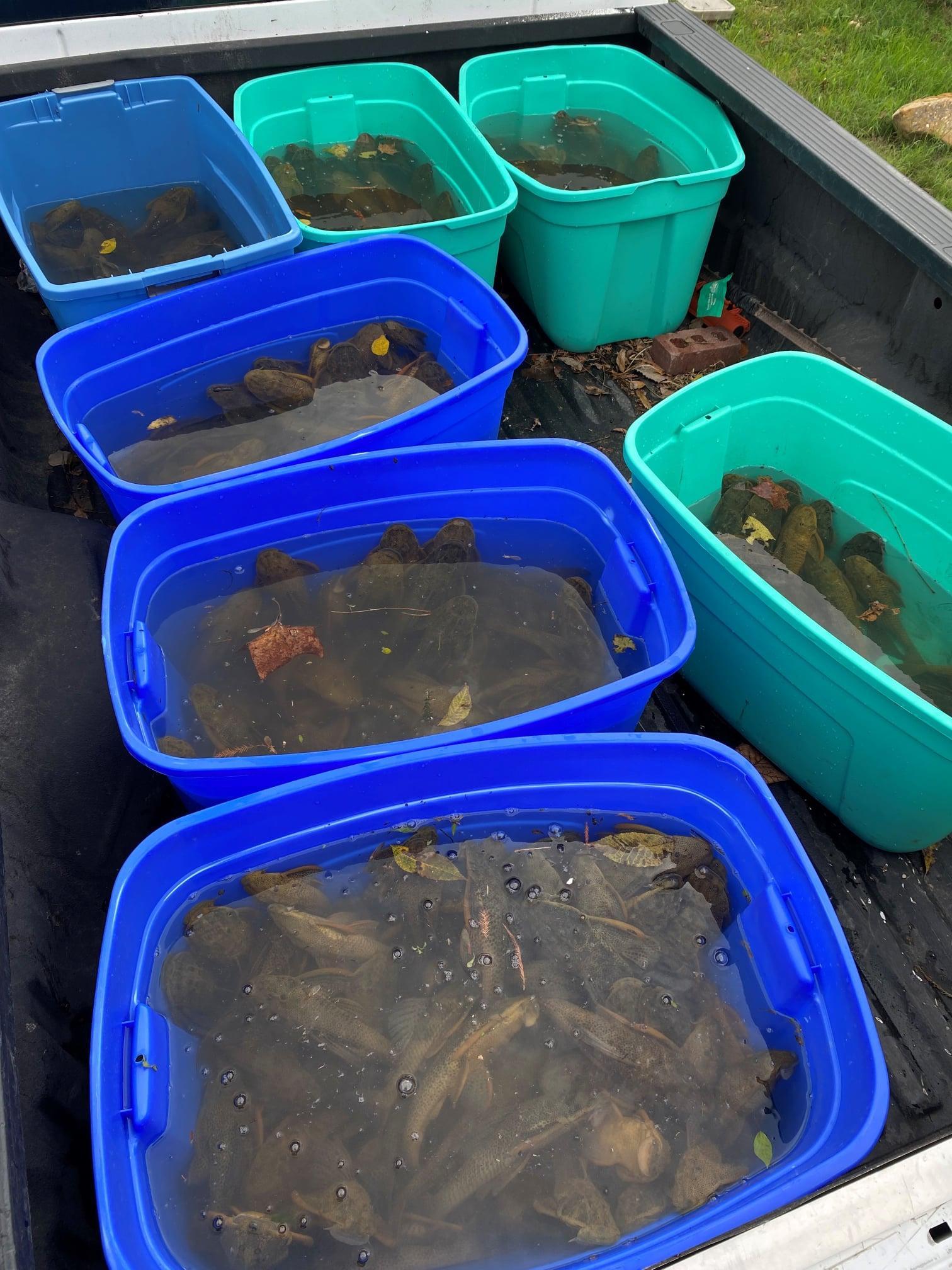
Texas Parks and Wildlife shared this photo of 406 Suckermouth Armored Catfish removed from the San Marcos River by Texas State and Texas A&M researchers during a dewatering event at Rio Vista Park. Photos courtesy of Texas Parks and Wildlife
Invasive fish species raises river concerns
An exotic, armored fish that can grow up to two feet in length threatens to disrupt the San Marcos River ecosystem.
The Suckermouth Armored Catfish (Hypostomus Plecostomus) destabilizes banks, eats the eggs of endangered species, and is available at most aquarium stores, says Dr. Timothy Bonner, Ph.D. Director and Professor of Aquatic Biology at Texas State University.
“You buy them small,” Bonner said. “What they like to do is eat algae, so you can put them inside your aquarium, and they'll stick to the side of the aquarium and will consume the algae.”
While the catfish may be useful in the short term, “whenever they get big — and they get big — they outgrow their aquarium, and people tend to get rid of them,” Bonner said.
There are currently 14 non-native fish species swimming through San Marcos waterways, including the Suckermouth Armored Catfish, according to Bonner.
Bonner offered two reasons why he believes San Marcos is home to several non-native fish species.
One of those reasons is the ponds outside the Freeman Aquatic Biology building at Texas State used to be a part of the National Fish Hatchery system built in the early 1900s.
The other reason is fish tank dumping, which Bonner attributes to San Marcos’ large student population.
“They move within a few years, and I think that might increase the chances of getting those fish dumped into the river, which again is illegal, but people are thinking more about the free willy concept,” Bonner said.
Suckermouth Armored Catfish are considered successful invaders for a few key reasons, according to Kristy Kollaus, environmental scientist for the Edwards Authority Habitat Conservation Plan (EAHCP).
“They have this armor plating, so really big armored plating, which makes them hard for predators to consume,” Kollaus said. “Outside of their native range, they do not have known predators, so there's nothing actively consuming or feeding on them to help keep their numbers down.”
Suckermouth Armored Catfish also threaten the Fountain Darter, an endangered species identified in the EAHCP.
The U.S. Fish and Wildlife Service requires municipalities to adopt HCPs. Each year, the City of San Marcos receives EAHCP funds for invasive, non-native fish and plant management.
Funding for the EAHCP program comes from fees assessed on Edwards Aquifer groundwater withdrawal permit holders, according to Mark Enders, habitat conservation manager with the CIP/Engineering Department of San Marcos.
On Tuesday, Dec. 6, the San Marcos City Council renewed its contract with Atlas Environmental, Inc. for Aquatic Invasive Fish and Snail Removal for the annual amount of $16,200.
The contract with Atlas has been in effect since 2013. As of May 31, Atlas has removed 12,537 catfish from the Upper San Marcos River and Spring Lake.
Kollaus said what researchers at EAA, the Meadows Center, and Texas A&M are working on right now is “implant[ing] tags, these radio sonar tags into armored catfish to see if we can figure out where they congregate their population so we can improve our efforts,” adding that gene editing may also be a possibility down the line.
While the city is not currently considering an ordinance banning the sale of aquarium fish, residents and Texas State students can drop off their unwanted aquarium fish at the city’s Discovery Center.
“This provides a safe, humane option for folks who would like to properly get rid of their aquarium fish without the need to release [them] into the river system,” Enders said.
For more information, visit https://www.sanmarcostx.gov/2798/Pet-Fish-Drop-Off-Adoptions.











